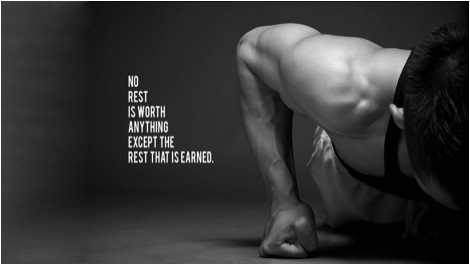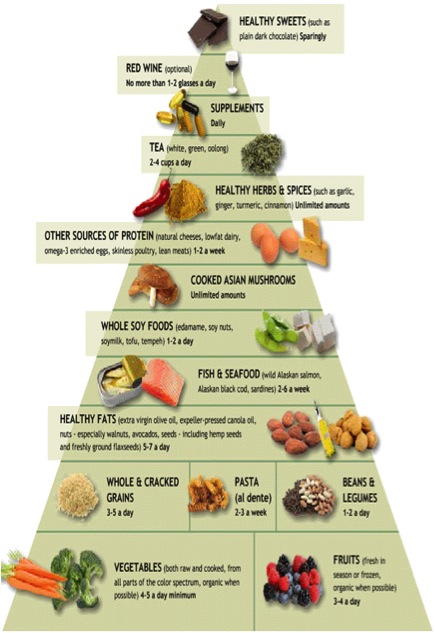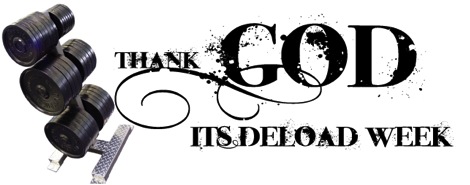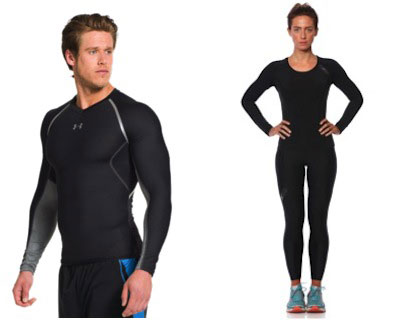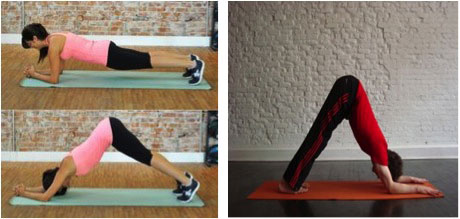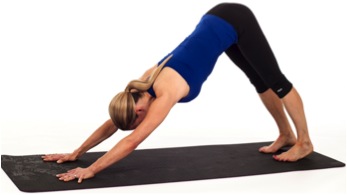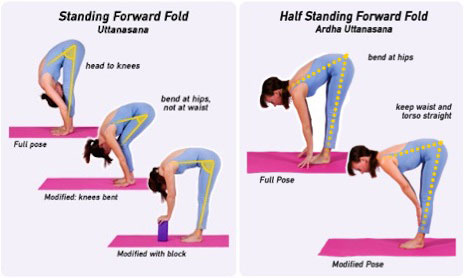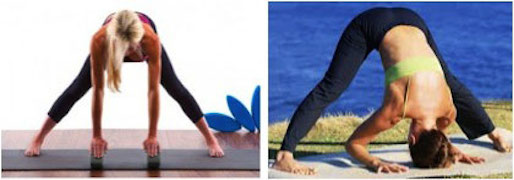A very popular quote all over the internet defining a ‘good’ workout is that, if you still look cute at the end of your workout, you did not train hard enough. A typical challenging workout will leave you drenched in sweat and make you grimace while cranking out the last few reps as you struggle to bear the burn in the muscles you are working. The pain should end there. At the most, you should experience some soreness or stiffness the next day.
Soreness is a sign that your body is trying to adapt to the intense routine.
The stress of a grueling workout should not extend to your joints or your non-working muscles simply because that indicates over straining or over training. The “train hard-or-go home” mentality would yield admirable results only if you train hard consistently.
No matter how careful you are, building muscle and losing fat requires pushing your limits that will often cause unwanted minor discomforts or pain. This can occur due to variable reasons, simply because most of us are hardly at the peak of our fitness or symmetry when we get started. Reinforce your efforts with a few habits that help you achieve optimal recovery before you hit the gym to conquer your next workout.
- Amplify the benefits of a protein rich diet with an anti-inflammatory diet:
Consumption of post-workout protein shake is probably the only conscious attempt towards recovery that most people make. Although protein powders are an expensive, yet a convenient way to increase daily protein intake for muscle gain or fat loss; one should aim to include a plant or animal protein source in all their major meals. Depending upon the intensity of your daily workouts, go for 0.8 to 1.5 grams of protein per kilogram of your bodyweight.
While the amino acids in protein sources rebuild your muscles, leverage their benefits by cutting back on inflammatory foods. Stay particularly away from trans-fats, simple sugars, processed grains, alcohol, artificial sweeteners like aspartame etc.
Anti-inflammatory foods revive your immunity and strengthen your joints. Reinforcing the joints through preventive measures is especially important since inflammation free joints enable us to withstand just about any kind of physical stress like that involved in pumping heavy iron or high-intensity workouts. The following image of Dr Weil’s food pyramid sums up the diet that would enable people of all age groups to remain active and pain free.
- Water, Water, Water – the ultimate cooling lubricant:
Drinking adequate water before, during and right after a workout will flush out toxin build up in the muscles and ensure faster recovery.
Working out with a dehydrated body will not only cause greater muscle breakdown during exercise but also lead to painful muscle soreness thereafter. No matter how healthy your diet might be, inadequate hydration will hamper nutrient absorption and prevent prompt recovery. A sedentary person should consume around 1.5 liters of water a day. If your workouts are intense enough to leave you breaking heavy sweat, you are better of drinking at least 2-3 liters of H20 on workout days.
- The magic of metamorphosis takes place only while you sleep:
We all know and can surely ‘feel’ the benefits of eight hours of sleep the next day. However, the quality is as important as the quantity if you want to grow leaner, faster, stronger, fitter and constantly want to stay on top of your game. During the deepest phases of your sleep the production of human growth hormone and melatonin peaks which renews every tissue of your body at a much faster rate. Your commitment towards sound nutrition and consistent workouts activates the progression towards your dream body only while you sleep.
Make quality nighttime rest a priority by cutting back on caffeine and alcohol. Stop carrying smart-phones and laptops to your bed and avoid consuming heavy meals right before dozing off.
- Active rest – the healthy pathway between all or nothing:
No matter how committed you might be towards a physical transformation, constantly training your body to failure will leave you sore and vulnerable to injury. A couple of strategically placed active rest days in between heavy training days will significantly ease the pressure of your body. Take out time for cycling, swimming, dancing or light jogging with a friend or family member or simply get out early in the morning to zone out by yourself to enjoy good weather along with your favorite music. Active rest as opposed to passive rest will not only help you find joy in movement but also speed up the metabolic process to recover and get fully conditioned for yet another successful killer workout resumed with enhanced performance.
- Getting stronger sometimes calls for lifting light:
De-loading is particularly applicable to people for whom lifting heavy and hard is a part of their lifestyle. This technique may also prove useful for people who start feeling the strain of overtraining several weeks into an exercise program.
A good strength-training program incorporates progressive overload in a cyclical format by varying the weight range, sets and number of exercises to build strength, endurance and lean muscle mass. Growth takes place when the body recovers during rest.
A de-load week maybe included after twelve weeks of heavy lifting or every time a person’s fitness hits a plateau. Simply put, one lifts at 60-40% capacity of their one rep max for fewer repetitions and sets than usual. This approach sustains the neural pathways involved in executing a lift with perfect form and technique while relieving the joints, ligaments and tendons of the stress of managing heavy loads.
- Stretch to get limber and stay injury free:
People gravely underestimate the contribution of a cool-down and stretch routine towards recovery. Ten minutes on a cardio machine followed by a full body stretch will remove all the metabolic wastes generated during weight training or high intensity intervals.
Frequent neglect towards discharging lactic acid build up will start provoking a constant feeling of fatigue and tightness in the muscles ruining natural posture and movement in the long term and set you up for injury.
The following video includes a combination of some very basic, fundamental stretches that will prove particularly useful at the end of a typical gym session of cardio and weight training.
- Roll away to renewal:
Sometimes stretching is just not enough. If you are a seasoned lifter or resort to intense workouts to compensate for long, sedentary hours spent at the office, chances are some of the micro-tears created in your urge to get fitter may not have healed completely. A foam roller offers the benefits of a deep tissue massage without the cost. You get to control the discomfort of the pressure to release sensitive, tight knots all over your body that restrict the full range of motion of your muscles.
Foam rolling is a powerful therapeutic technique that will have you running around with the flexibility of a teenager no matter what your age. On a cautionary note, people often fail to grasp the correct manner of executing various foam-rolling exercises. Applying pressure to your sore spots with incorrect technique might make you hit a nerve or worsen damaged tissue.
Rolling should merely last 5-10 minutes every day. It is not meant to be done too fast or to be used directly on the lower back. While taking the time to learn the exercises might sound cumbersome, it is nevertheless, a worthy investment.
The following video demonstrates a full body foam-rolling workout.
BSN sponsored athlete, Dr Sara Solomon discusses the various benefits of foam rolling in detail while illustrating the exercises for common sore spots.
- Compress yourself to improve performance:
Gone are the days when people used to wear loose sweat pants and anti-fit shirts to the gym. Recent research indicates that sweat resistant compression clothing is helpful in reducing recovery time between intense workouts. The evenly applied surface pressure of compression gear on the body not only improves blood circulation and increases oxygen delivery to the muscles but also limits generation of lactic acid during weight training significantly upgrading the quality of your workouts.
- Inversion therapy – Go upside-down, to feel better when upright:
While a head stand or a shoulder stand are the ultimate inversions that offer instant de-stressing benefits, one is better off learning them from an experienced yoga teacher.
Nevertheless, there are few gentle half inversions to get the heart higher than the head and hence ease the body out of the fatigue of an intense workout.

These poses will calm your nervous system, help you get a lower resting heart rate, strengthen the lungs, ease the pressure on the lower back, relieve you of any tension in the body or mind and hence help you sleep better. Aim to hold each pose for at least ten deep breaths. The following images demonstrate a beginner version as well as the pose at full stretch.
To get the hang of the Dolphin Pose, master the plank and try to lift the hips towards the ceiling to form an inverted V. On right, the Dolphin pose displayed at full stretch.
Beginner versions for a Downward Dog:
The actual Downward Dog:
Forward Bends for all levels:
Wide legged Forward Bend (complete pose shown on right):
Legs up on the wall/chair (ideal to recover from long distance running or heavy leg workouts):
